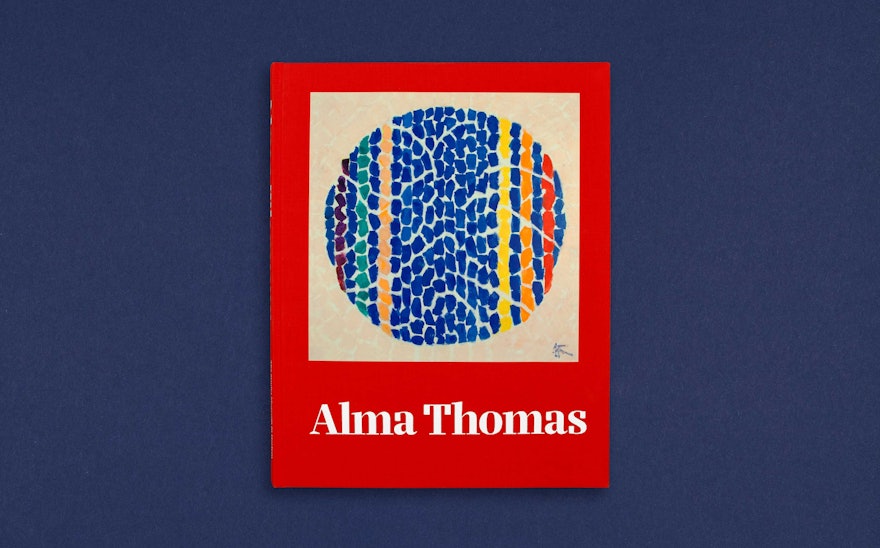The paintings of Alma Thomas (1891-1978) fuse dazzling color, expressive brushwork and elaborate patterns to create an exuberant vision of abstraction. Pentagram has designed a definitive new monograph on the work of the pioneering African-American painter, which accompanies the recent Alma Thomas exhibition organized by the Studio Museum in Harlem in conjunction with the Frances Young Tang Teaching Museum and Art Gallery at Skidmore College.
The work of many African-American abstractionists is only recently coming into the spotlight, and this important book, edited by Ian Berry and Lauren Haynes, co-curators of the exhibition at the Studio Museum, represents the most comprehensive look at Thomas’s painting to date. Thomas began her painting career at the age of 68, after retiring from teaching art to junior high school students in Washington, DC. Her highly personal style built on the traditional Abstract Expressionist practice, and she became a significant artist in the Color Field movement and the Washington Color School. In 1972, at age 80, she was the first black female artist to be given a solo show at the Whitney Museum of American Art. Her distinctive synthesis of pulsating, colorful patterns and lattice-like networks of line continues to influence artists today.
The design of the book makes the most of Thomas’s electrifying color, filling the pages with vibrant, large-scale reproductions of her work and using color as an organizational element with the contents. The volume traces Thomas’s development as an artist, with the work loosely grouped into four different sections related to phases of Thomas' career: her transition from figuration to abstraction, her fascination with the natural world and space exploration, and the mosaic-like paintings she completed before her death.
Thomas’s painting Resurrection (1966) is the first artwork by an African-American woman to be featured in the White House, where it hangs (for now) in the Old Family Dining Room, selected by Michelle Obama for her 2015 makeover of the space. The work has been donated to the permanent White House Collection. A photo of Obama with the painting is included in the book’s preface.
Each section of the book begins with a folio of divider pages that are printed on uncoated paper and appear in a different color (green for “Earth,” orange for “Mosaic”). The dividers open to reveal specially commissioned responses by leading artists Leslie Hewitt, Jennie C. Jones, Leslie Wayne, and Saya Woolfalk. At the back of the book, the Archive section acts as an appendix that collects an exhibition history, personal photos, an artist’s statement, and reprints of key interviews and essays, also printed on uncoated stock.
The book’s typography is set in Marlene and its display variation, Marlene Grande, both designed by Nikola Djurek of Typotheque. The designers selected the fonts for as painterly serifs and letterforms that almost mimic Thomas’s brush strokes.
Alma Thomas is published by DelMonico Books and Prestel and is available for order from Amazon and the Studio Museum Store.

